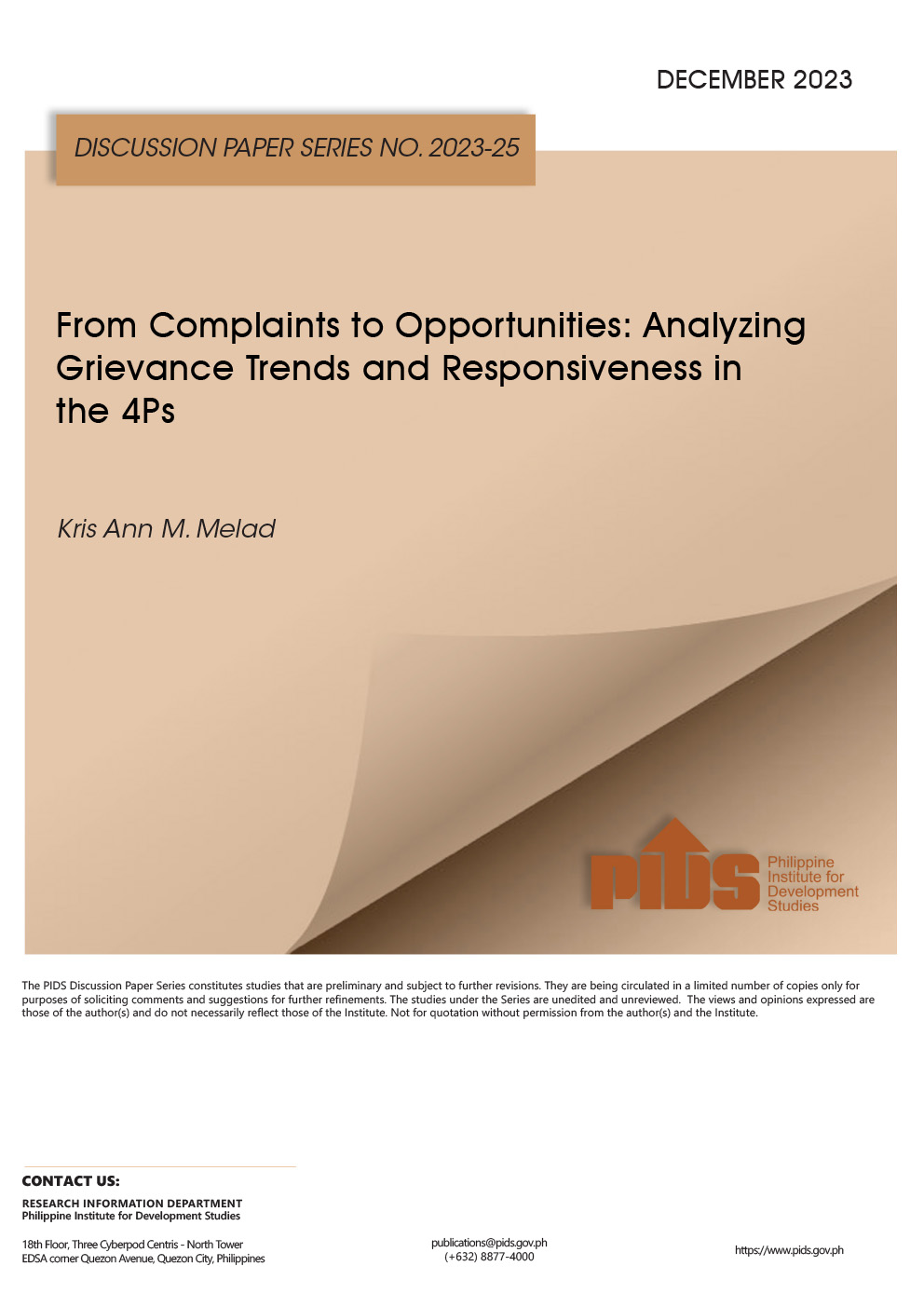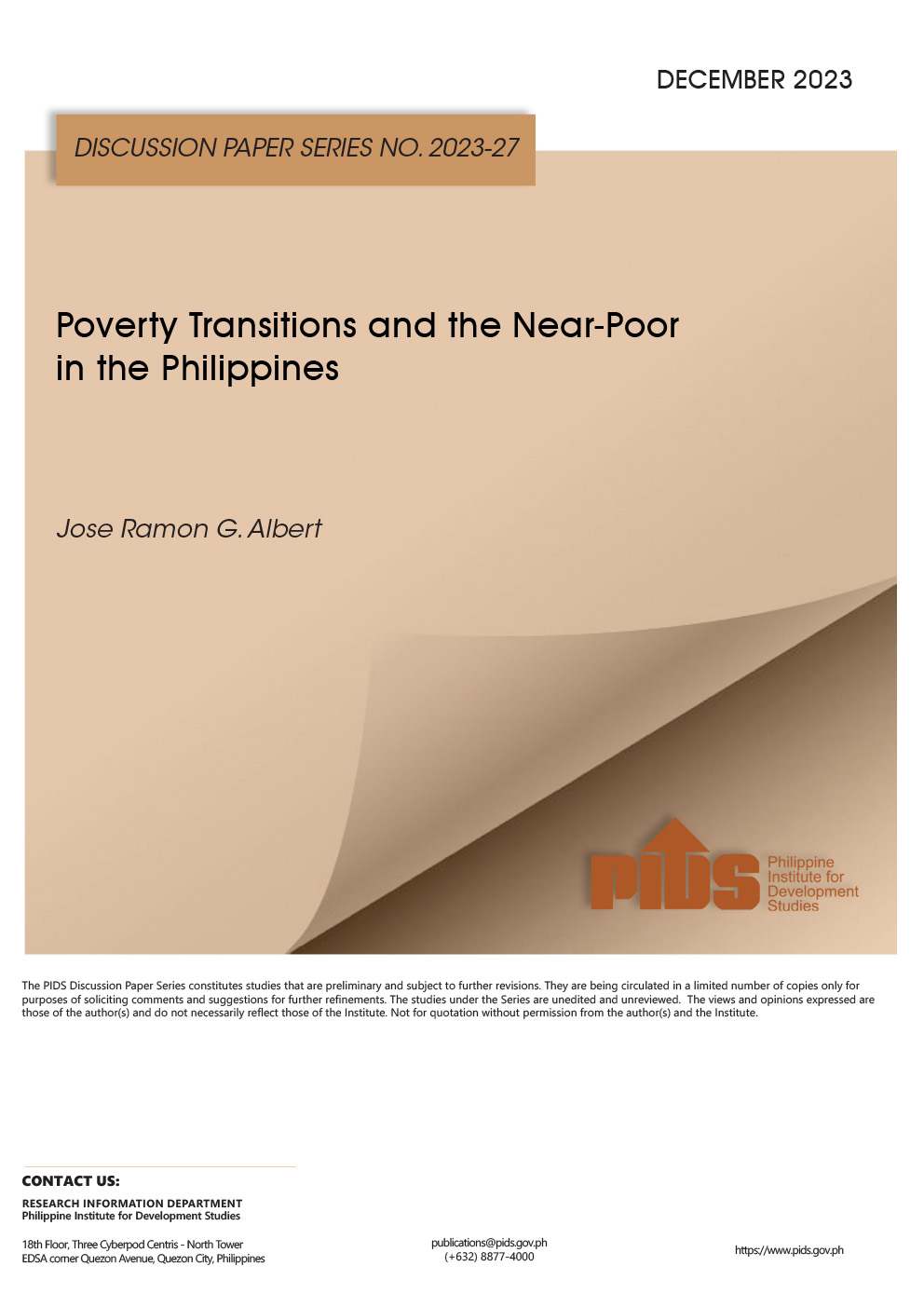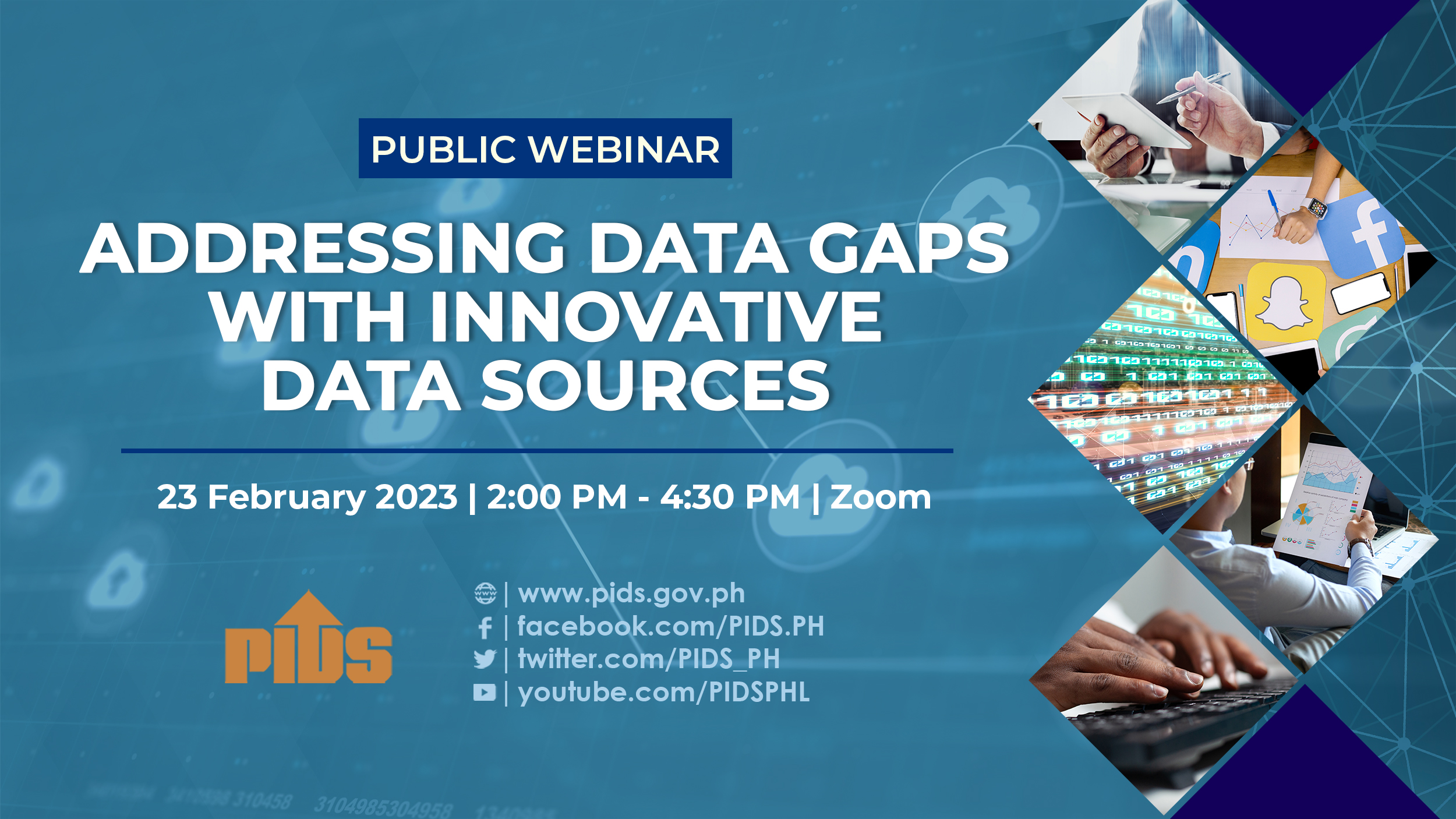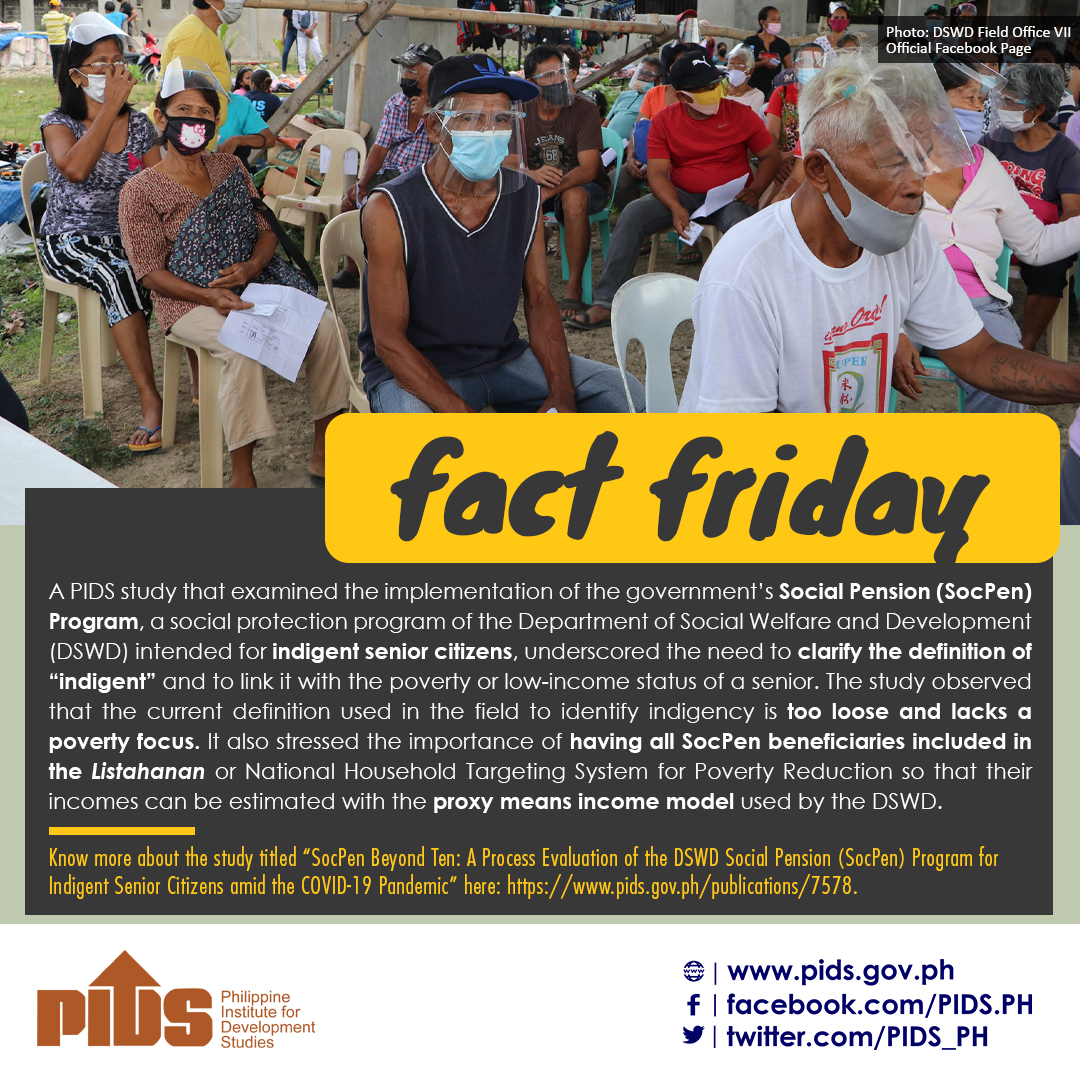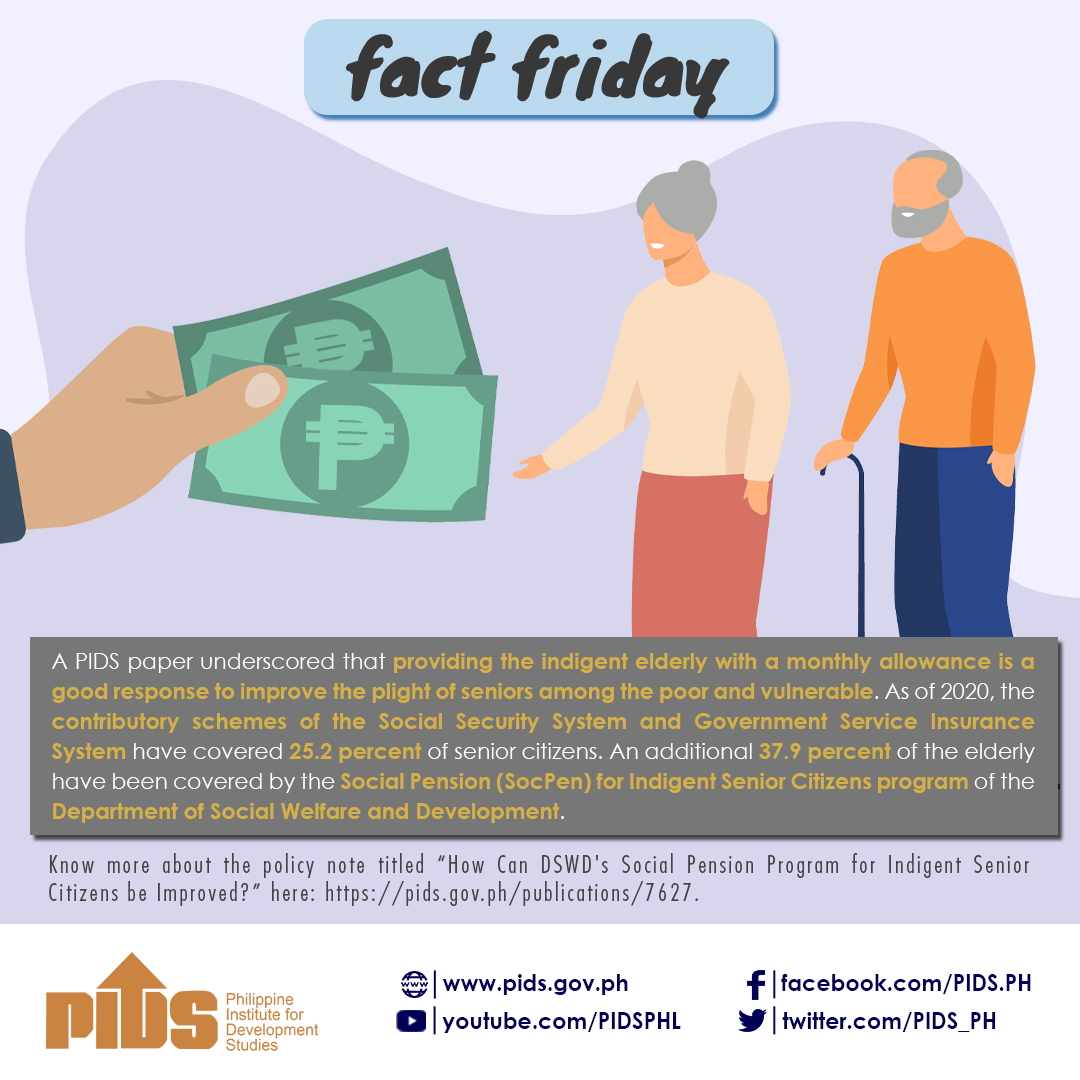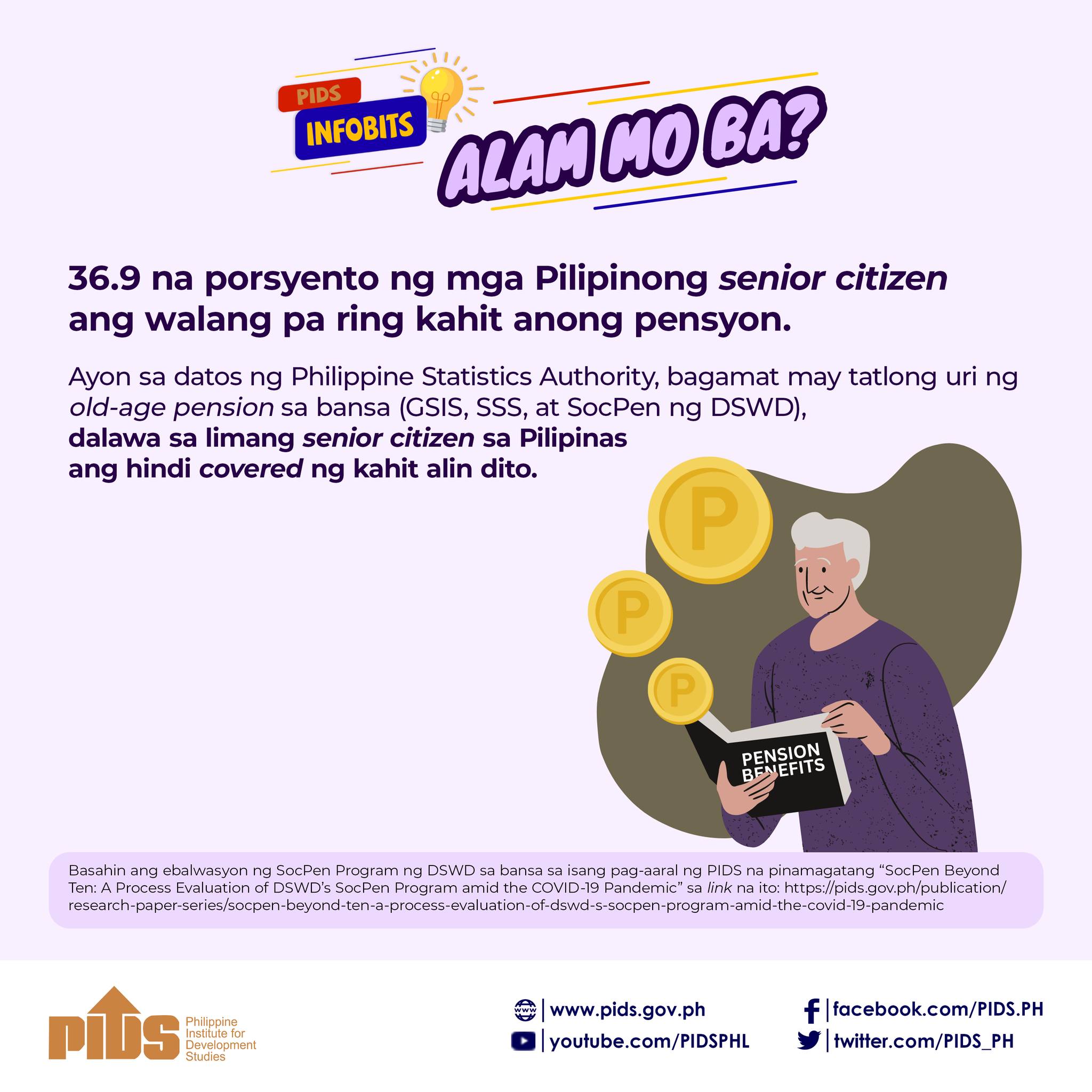The government should consider increasing the noncontributory monthly pension of senior citizens amid inflationary pressures and after the pandemic highlighted challenges of the sector.
In its latest policy note, state-run think tank Philippine Institute for Development Studies (PIDS) said the Department of Social Welfare and Development-led Social Pension (SocPen) program should correct some implementation deficits to make the program more impactful.
Since 2011, the SocPen has provided indigent senior citizens with a noncontributory monthly pension of P500 to augment their daily allowance for food and medicines.
But PIDS senior research fellow Jose Albert and research assistant Mika Muñoz said beneficiaries believe this amount needs to be adjusted amid inflation.
“Although the program was never meant to address all the needs of senior citizens, the value of P500 in 2011 is much less than its value in 2021,” the researchers said.
“Congress and program implementers should examine if the country can afford to provide universal social assistance to senior citizens, especially given the myriad problems being faced amid the pandemic,” they said.
The current stipend is just 7.5 percent of the average expenditures on food and health of the bottom half of the per capita income distribution.
The researchers also suggested that cash support of P1,000, P750, and P500 may be considered depending on the income of every senior.
The policy note showed that among the bottom 50 percent, as much as 5.4 million seniors are without pension coverage under the Social Security System or Government Service Insurance System. Of these, 1.8 million were covered by SocPen.
The remaining 3.6 million were not covered, which means that SocPen had an undercoverage rate of 66.1 percent among the bottom 50 percent.
Albert and Muñoz said the DSWD could use several income thresholds for differentiated cash assistance.
The P1,000 can be given to the subsistence poor and the P750 to the poor, but not subsistence poor or those with incomes between the subsistence poverty threshold and the poverty line.
The P500, meanwhile, will be given to low-income seniors, but not poor or those with incomes between the poverty line and twice the poverty line.
“Improving the program’s targeting to ensure that disadvantaged senior citizens really benefit from the program and relinking the operational definition of indigent to financial need should be considered,” they said.
SocPen has increased the old-age pension coverage of SSS and GSIS by 78.5 percent, which was at 30.6 percent in 2020.
PIDS urges hike in noncontributory monthly pension of seniors

